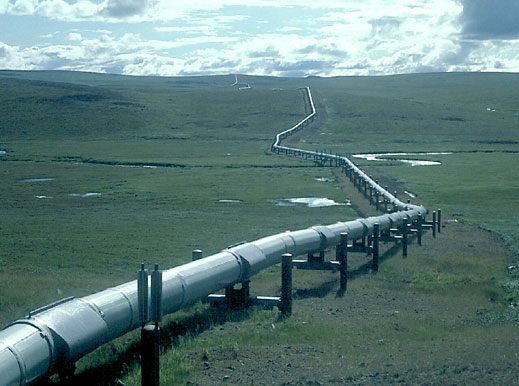
Black Sea LNG Project: A Spoke in Nabucco’s Wheels?
Publication: Eurasia Daily Monitor Volume: 7 Issue: 167
By:

On September 14 in Baku, the heads of state endorsed the Azerbaijan-Georgia-Romania Interconnector (AGRI), a project to import natural gas from Azerbaijan to Romania and onward to Hungary. The project involves the liquefaction of gas for shipment by tankers across the Black Sea from Georgia to Romania (EDM, September 15).
AGRI is one among the multiple options for gas export from Azerbaijan. The signing event with the three presidents in Baku provided the latest illustration of a scramble among many potential customers for Azerbaijani gas. While production in Azerbaijan is rising, the demand seems to rise even faster. Existing pipelines can accommodate growing export volumes from fields currently in operation, pending Phase Two of production at Shah Deniz by 2016.
At that point, the EU-backed Nabucco project will need at least 8 billion cubic meters (bcm), possibly 10 bcm per year for the first stage of this pipeline. That volume must be committed to Nabucco ahead of time, so as to allow the pipeline’s construction to start by 2012 based on that commitment. Inevitably, the proposed AGRI would compete against Nabucco over access to finite volumes of Azerbaijani gas. The AGRI announcement can inadvertently undermine confidence in the availability of the requisite volume of Azerbaijani gas for Nabucco.
Azerbaijan finds itself in the enviable position of evaluating a full range of customer countries and export routes for its gas. During many years of discussions on Nabucco, the Azerbaijani government staunchly supported this project, without seeking alternative options. Baku followed a strategic approach to Nabucco on two levels: that of national development and that of connecting Azerbaijan directly with Europe. On both counts, Baku regarded the Nabucco project as vital to Azerbaijan, and probably still does.
However, governments and companies purportedly more mature than Azerbaijan, often departed from a strategic approach to Nabucco, seeking instead short-term or narrowly opportunistic advantages (e.g. on Turkish transit, Austrian OMV-Gazprom understandings).During this time, the European Union discussed funding for Nabucco inconclusively for years. Unsurprisingly, Azerbaijan’s government began looking at the full range of alternative options and will continue doing so until Nabucco (still the preferred option in Baku) comes closer to materializing.
Azerbaijani government officials and State Oil Company executives listed the full range of gas export options during the international oil and gas conference in Baku on September 15-16, just after the AGRI signing. They mentioned this option as one among multiple alternatives (Day.az, Trend Capital, September 15-17).
Nabucco’s outlook has brightened with the September 9 announcement by three international lending institutions that up to 4 billion Euro can be made available to the Nabucco project in 2011. The EU Commission in Brussels helped organize this initiative, enhancing confidence in the project. The AGRI announcement, which followed within days, does not seem to contribute to such confidence. Instead, it may rekindle debates about the availability of Azerbaijani gas in sufficient volume for Nabucco’s first stage.
European Energy Commissioner, Guenther Oettinger and other EU officials declined to attend the AGRI signing event. Instead, the EU’s representation in Baku made a statement that the EU-backed Southern Corridor—with Nabucco as its mainstay— is “the optimal project” for transportation of Azerbaijani gas to Europe (News.az, September 15).
For their part, Russian experts anticipate that the Russian government would do nothing to oppose AGRI. Although intended to compete against Gazprom’s gas in markets downstream, AGRI is seen as competing against Nabucco for gas resources upstream, which is the decisive consideration from Moscow’s standpoint (Kommersant, September 15).
Romanian President Traian Basescu declared at the signing event that AGRI is “more cost-effective” than Nabucco, South Stream, or any project for Caspian gas transportation to Europe (Agerpres, Mediafax, September 14). However, a feasibility study to determine AGRI’s cost effectiveness is not yet in sight. With cost estimates varying widely from 1.5 billion Euro to 5 billion Euro, and gas volumes projected at anywhere from 2 bcm to 8 bcm, assessing AGRI’s cost effectiveness seems premature, and touting it over Nabucco may be interpreted as reflecting a preference.
Hungary is a potential market for AGRI gas. In fact, Prime Minister Viktor Orban participated in the launching event in Baku. On the following day, however, a Hungarian government statement clarified that Nabucco remains Hungary’s “number one priority” (MTI, September 15).
Turkmenistan, along with Azerbaijan, holds the key to Nabucco’s second stage and the Southern Corridor generally. On September 17 while in Turkey, Turkmen President Gurbanguly Berdimuhammedov announced that he has “no doubt” in the implementation of the Nabucco project. He also declared explicitly for the first time that the East-West pipeline project across Turkmenistan, running from the country’s east to the Caspian shore, is “directly linked” with the Nabucco project (Trend Capital, September 17). This announcement, though unsurprising, has landmark significance.
Turkmenistan launched the East-West pipeline project earlier this year with a view to carrying 30 bcm of gas annually from 2015 onward, potentially available for cross-Caspian transportation to Azerbaijan and the Southern Corridor. Completion of this pipeline may enable AGRI and other transportation projects to materialize, but only after Nabucco is supplied to capacity.




